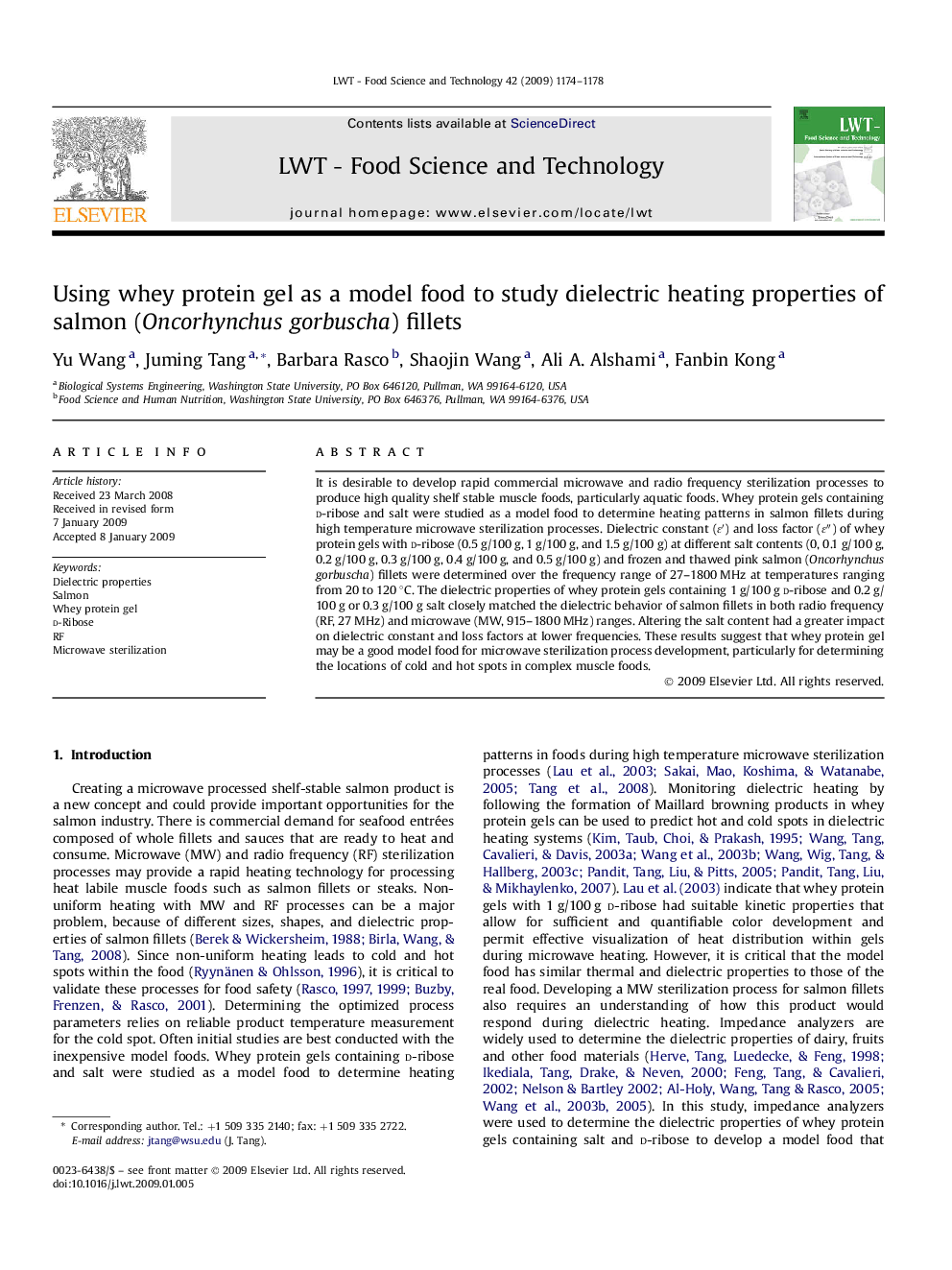| Article ID | Journal | Published Year | Pages | File Type |
|---|---|---|---|---|
| 4564793 | LWT - Food Science and Technology | 2009 | 5 Pages |
It is desirable to develop rapid commercial microwave and radio frequency sterilization processes to produce high quality shelf stable muscle foods, particularly aquatic foods. Whey protein gels containing d-ribose and salt were studied as a model food to determine heating patterns in salmon fillets during high temperature microwave sterilization processes. Dielectric constant (ɛ′) and loss factor (ɛ″) of whey protein gels with d-ribose (0.5 g/100 g, 1 g/100 g, and 1.5 g/100 g) at different salt contents (0, 0.1 g/100 g, 0.2 g/100 g, 0.3 g/100 g, 0.4 g/100 g, and 0.5 g/100 g) and frozen and thawed pink salmon (Oncorhynchus gorbuscha) fillets were determined over the frequency range of 27–1800 MHz at temperatures ranging from 20 to 120 °C. The dielectric properties of whey protein gels containing 1 g/100 g d-ribose and 0.2 g/100 g or 0.3 g/100 g salt closely matched the dielectric behavior of salmon fillets in both radio frequency (RF, 27 MHz) and microwave (MW, 915–1800 MHz) ranges. Altering the salt content had a greater impact on dielectric constant and loss factors at lower frequencies. These results suggest that whey protein gel may be a good model food for microwave sterilization process development, particularly for determining the locations of cold and hot spots in complex muscle foods.
